Arcam Solo Neo - £1,350
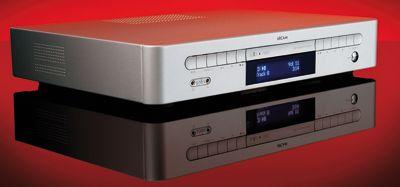
The Arcam Solo first saw the light of day around six years ago when most audiophiles had CD as their primary source. That is probably still the case for many but there is increasing demand now for machinery that can handle streamed music, whether it’s sourced from the user’s home network or from the internet. And streaming ability is what the Solo neo brings to the party.
Naturally, being a member of the Solo family, it also offers CD and radio capabilities – the latter now including internet broadcasting – along with its integral preamplifier and power amplifier stages. Furthermore, its USB port can play music from local devices such as memory sticks or hard drives, while the duplex RS232 connector offers playback and control of iPods by way of the optional irDock.
Dot matrixThere is no doubt that Arcam’s Solo neo is a looker. Only available in Silver – because black does not flatter its lines so gracefully – the quadrant-shaped edges on the unit’s fascia act in a whole that is greater than the sum of the parts to give the unit a thoroughly and classically stylish appearance. Without them the neo would be plain. With them it looks damn sexy.
In the lower half of the fascia there is a dot matrix display panel, which provides information and feedback to the user. Arcam has been thoughtful here and provided double-height lettering on some menu options that is a considerable help for anyone with less than 20/20 vision. It is a shame that the eyesight of those past 40 was not given the same consideration when the tiny lettering and icons on the front panel push buttons were applied in grey paint on the silver background, or when the remote control handset was selected (We did spend some time peering through a magnifying glass trying to find the button to open the CD drawer!).
The Solo neo, considering it starts life as a multiple-source hi-fi system condensed into a single unit, is nonetheless reasonably well equipped, with inputs for external devices and preamp outputs should you need more power than the integral 50-watt design can deliver.
However, Arcam is at pains to insist that if users connect external components to the neo, then they do so with high-quality, well-shielded interconnects. This is so they do not negate the strenuous efforts that the company has put into making its circuitry as quiet as can be by using cables that might act as aerials and introduce electro-magnetic interference.
One unusual measure that Arcam employs to counter noise is what it calls Stealth material, which converts high-frequency radiation to heat and is placed above the CD mechanism.
The unit features a Wolfson 24-bit Delta Sigma DAC, that operates natively at 44.1 kHz when the CD input is selected, but switches its sample rate to 48kHz when it is used with the DAB, USB and network sources.
The output is, by way of a Toslink connector, used as a further method to keep the overall noise floor down through galvanic isolation of the connection to any external DAC or digital recorder.
The neo will operate wirelessly, but for the review we did as we always do and ran it through a wired, Cat 5 connection for the added security and consistent performance this brings. We tested the neo as a stand-alone player through NEAT Petite SX standmount speakers and Chord Company Epic cables and as a feed to two DACs; the inexpensive Cambridge DacMagic and the rather more expensive Naim DAC feeding tri-amped active Naim DBLs to see how it fared under intense scrutiny. In recognition of its good looks it was parked on the top shelf of a Quadraspire Sunoko Vent support.
Network music sources were a NASrip computer, a NetGear SAN (Storage Area Network) and a VortexBox ripping NAS unit, affording us access to differently stored rips that could furthermore be compared to the original CDs.
Good lookingThere is little argument that the Arcam Solo neo is a strikingly good-looking piece of industrial design, one that is surely destined to be displayed proudly in the home and not tucked away out of view.
The neo targets buyers who want separates performance – or close to it – from an all-in-one unit and designing such a device brings with it positive and negative considerations: not the least of the negative elements is keeping the earth plane at zero volts when there are several separate power supplies serving different elements on the circuit board, and minimising noise migrating between the various elements of the design. This goes beyond simply physically separating the relatively clean analogue stages and the ‘dirtier’ and noisier digital sections. To minimise noise Arcam has introduced multiple power supplies, using a servo technology to ensure that all zero-voltage points remain at zero volts and do not waver sympathetically with varying demands for power.
An easier to spot performance tweak are the dampers wrapped around selected capacitors. Certain capacitors tend to act like empty drinks cans being struck and resonate, affecting their musical performance through microphony: the dampers act like a rubber band around the can and quell those vibrations.
This might seem a minor consideration, but increasingly nowadays, the performance down close to the noise floor, the ability to reveal nuances and low-level detail, is frequently what separates the exceptional hi-fi from that which is merely good.
PolyrhythmicTo ascertain what sort of signal the network media components were sending to the neo amplifier section we first listened to the output from the DAC through the big tri-amp reference system. All seemed well with a richly detailed, musically rewarding performance emerging. The top end has plenty of sparkle and well controlled energy while the bass has speed, power and good note shape and pitch definition. Afro Celt Sound System’s Shadowman exhibits all its intense instrumental texturing and wealth of detail, while powering along with marked polyrhythmic determination. Switching to the neo’s integral amplifier stages, the sound retains the same fundamental character.
The low-frequency performance, however, loses a degree of weight, because the NEAT Petite SX loudspeakers (unlike the active Naim DBLs) do not enjoy the benefits of 15-inch bass units.
Playing Aurelo Martinez’ Laru Beya and Speed Caravan’s Kalashnik Love, the neo/NEAT combination impresses with its very generous soundstage and shows a clearly organised instrumental and vocal arrangement spread across a wide, deep vista. On both types of music the system displays excellent transient performance with distinct silences between notes, lending its temporal delivery genuine impetus and a real sense of purpose. Even Killing an Arab, which would have been rendered far too politely on early generations of Arcam electronics, displayed distinct angst and vitality here.
We then played some William Carter baroque guitar, but that is stored on a NAS at 24-bit/192kHz resolution, which the Arcam would not accept. Neither would it play Dawn Langstroth’s 24-bit/96kHz Highwire album. It could not be troubled to throw up an ‘out of range’ error message or similar, but just sat there insolently saying nothing. We found the USB input equally perplexing when we plugged in a memory stick containing a variety of different hi-res tracks, starting with a 24-bit/88kHz recording. It enumerated all of the tracks, but sat dumbly when we pressed the play button. This not a communicative way of dealing with problems such as users plugging in a device with overly hi-res music on it. And 24-bit/96kHz is hardly an extreme resolution these days.
The neo seems thoroughly content with orchestral music and big-band jazz, using its copious soundstage to particularly good effect on the Frank Sinatra Duets album. It also enjoys smaller-scale recordings equally, giving voices and instruments plenty of room in which to manoeuvre and allowing the listener to choose whether to focus on one or all of them The performance on internet radio is excellent, with outstanding clarity and freedom from coloration on Radio 4 announcers’ voices. Those voices demonstrate extreme detailing and remarkable realism with very little sense of artificiality.
The CD player, too, performs delightfully, sounding scrupulous in its information-retrieval and fluent in its musical communication. Sia’s Some People Have Real Problems was completely engaging, both in terms of her impassioned vocal performances and the recreation of her backing band’s skilful playing. The decay on the drumkit, in particular the way cymbals faded gently into silence, warranted recognition for Arcam’s seemingly successful efforts in lowering the noise floor.
No-brainerThe Solo neo is a very capable performer and would certainly trounce most older separates, but whether it truly competes with today’s finest is a moot point: it rather depends upon the particular makes and models to which it is compared. That said, the neo is a noteworthy achievement, however, a compact and highly attractive, multi-function unit that can take the place of a rack full of boxes and cables if needs be.
Certainly, if you’re looking for a convenient system, it seems a no-brainer thanks to amazing performance and versatility.
LIKE: The industrial design and aesthetics are striking
DISLIKE: The UI could be more communicative, when asked to play media beyond its capabilities
WE SAY: A solid performer, the neo’s interface could be better, but internet performance is a delight
DETAILS
PRODUCT: Arcam Solo neo
ORIGIN: UK
TYPE: One-box system
WEIGHT: 7.75kg
DIMENSIONS: (WxHxD) 430x 80x350mm
FEATURES:
• Connections for custom installation
• Matching compact Muso speakers available
• Adjustable bass equalisation to assist with speaker placement
• iPod compatibility through Arcam irDock
DISTRIBUTOR: Arcam
TELEPHONE: 01223 203200
WEBSITE: arcam.co.uk
 |
Inside this month's issue: Arcam Radia A25 integrated amp, iFi Audio iDSD Diablo 2 DAC/headphone amp, Eversolo DMP-A8 streamer/DAC/preamp, Line Magnetic LM-845IA valve amp, Record Store Day Spring Drop, standmount loudspeaker Group Test and much, much more
|



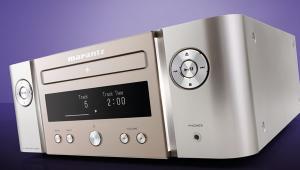
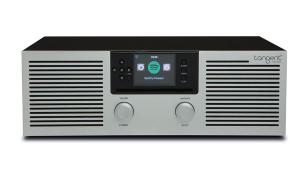



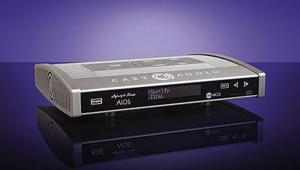
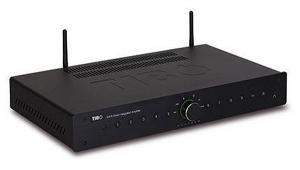

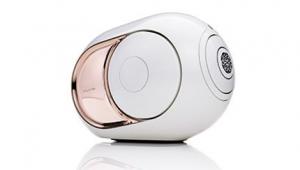
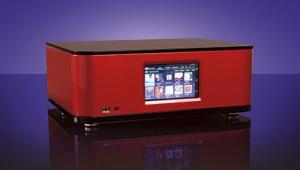

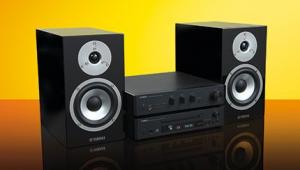
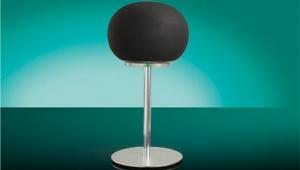






























.jpg)



